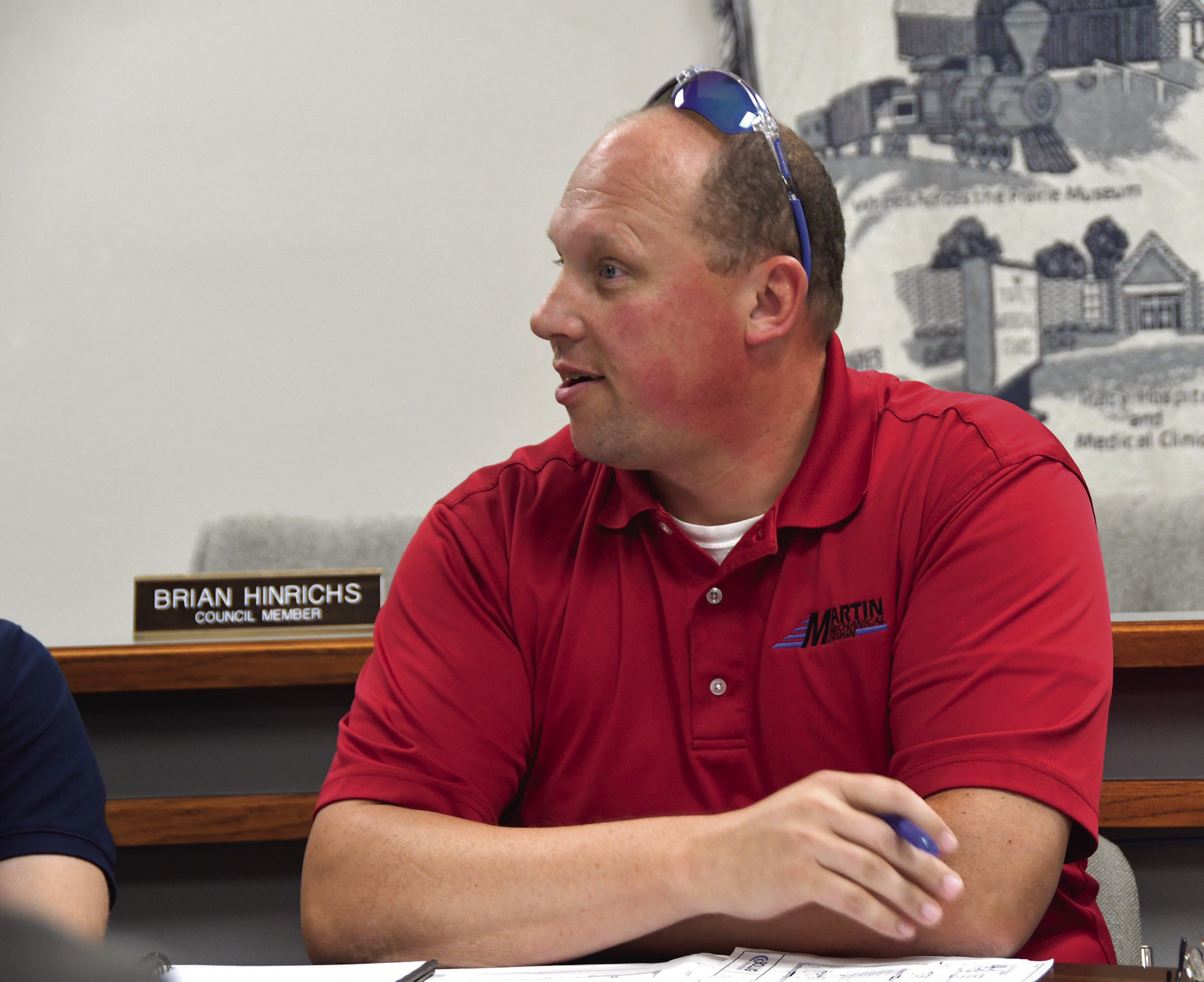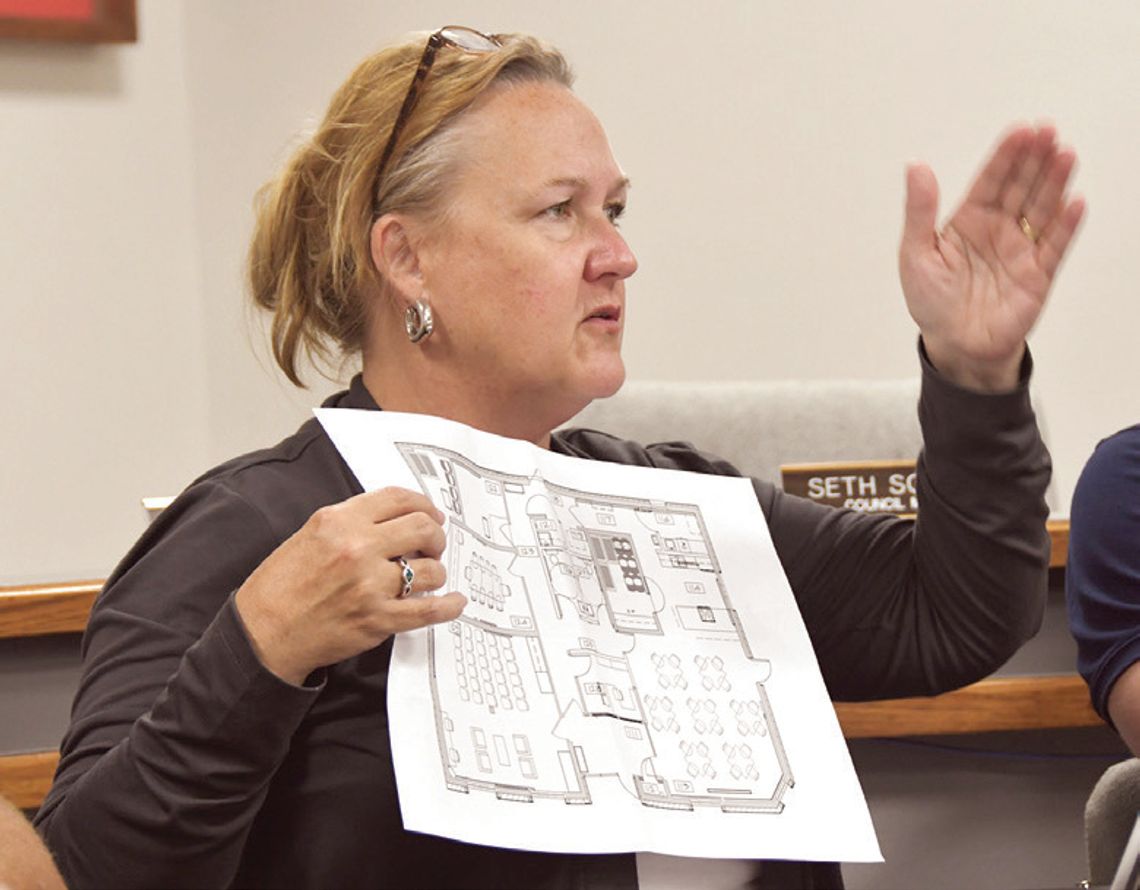Even though there hasn’t been much public news surrounding the future community center in Tracy, that doesn’t mean progress hasn’t been made.
Community center discussion on Tuesday centered around the mechanical infrastructure in the former ADO building, which the City of Tracy purchased in 2024.
“We want this to be a comfortable space for everyone,” said Barbara Marks of Bollig Engineering, who led the discussion group that included City Administrator Jeff Carpenter, Community Development Director Tom Dobson, Dave Dieter, commander of the Tracy American Legion, Ken Witt, Mary Squires and Chad Hansen, project manager for Martin Mechanical Design.
“We are at the stage right now that we call design development,” Marks said. “You’ve done a great job of getting ahead on some of the demolition, and that allows us to see a lot more.”
Hansen conducted a site visit to look at the current mechanical equipment in the building.
“A lot of equipment looks to have been replaced relatively recently,” he said. “My goal to stay within the budget is to leave that equipment exactly as it is. I do need to do a little investigation of what’s on the roof eventually. The best way to move forward is to salvage any equipment we can.”
Hansen said one of the biggest code concerns is ventilation, and he shared ideas for addressing this issue.
“The existing boiler system has definitely lived its life,” he said. “The fin tube is pretty beat up in most locations; anything we do there is additional heat that really isn’t needed; the other equipment can handle the space load.”
Hansen suggested they remove it for now and then see where the budget is at since it would be costly to replace all the components. He said the current 60,000-btu furnace is sufficient to heat the building.
“The gas heat that’s already there, minus the boiler, should be adequate,” Hansen said.
In terms of comfort, Marks said radiant heat around the perimeter of the building would be the best way to go.
“Our end goal is to improve the building’s envelope,” she said.
The bathrooms, Hansen said, will stay the same but will be reconfigured to make them handicap-accessible. For the sewer, since a portion of the floor (less than 25%) will be cut up a new PVC sewer line running out to 2nd St. could be installed. Also, the water line coming into the building is too small for current codes and will need to be upsized, Hansen said.
“Everything east of the hallway, that’s where the plumbing is,” said Marks.
Marks also suggested installing a drop ceiling to improve acoustics.
“When we have a lower ceiling, it clamps down noise, and it goes a long way to keep space quieter,” she said. “We might be playing with ceiling heights here and there … if we do it right, you won’t notice we did anything.”
The next phase of the project will include discussion about the electrical infrastructure of the building.
Also discussed Tuesday was the possibility of a partnership between the City, Legion and potentially the Masons. The two service clubs want to use the center for both display and storage purposes.
Dieter asked how much space the Legion will have in the building to either store or display some items.
“The question we have is, how many objects you have versus how many displays you have,” Marks said. “Can you get everything you need in a 3-foot wide space … or is it, ‘I need 10 feet by 10 feet?’” Dieter said he would prefer an area closer to the 10-foot option.
“We have uniforms that we wear when we do Honor Guard and Color Guard,” Dieter said. “Some of our uniforms might be close to 100 years old … a lot of those probably could go away. I’d have to go through to see how much of that stuff we need.”
Marks said one criticism of the proposed plan for the new center is the lack of storage space.
Carpenter asked how many items would be suitable for display.
“We’d like to have a few of our things (on a wall),” Dieter said. “There is a certain amount of stuff (that could be) displayed; there’s stuff that we want to keep that’s not displayed,” Dieter said.
Marks said one idea for a display could be in a hallway area.
“So many times, hallways are just a place you travel through, but you have a lot of surface area,” said Marks. “If we could put some nice lighting in there … some form of track lighting, that gives you the flexibility to illuminate and properly display things. That’s a dark hallway right now. If you have objects there that are illuminated, then it becomes a display area … and I think that gives respect to the past.”
Witt said the center would be a good place to display some of the Legion’s keepsakes.
“They have artifacts that have historical value that this community needs to be able to look at somewhere,” Witt said.
Dobson said when it comes to finding display areas, the museum and the VMC could also be possibilities.

CHAD HANSEN OF MARTIN MECHANICAL DESIGN shared his thoughts about current mechanical infrastructure at the former ADO building and plans moving forward for heating the building at a meeting about the future community center Tuesday. Photo / Per Peterson




